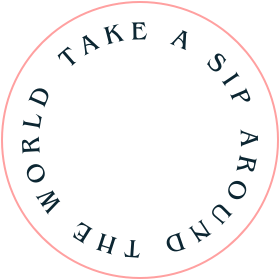Famously, Champagne is sparkling white wine produced in the Champagne region of France. We often think of it as a luxury, a splurge, a special-occasion-only type of beverage. But the truth is, there are many reasonably priced champagnes. But moreso, there are excellent sparkling wines from all over the world that are in competition with Champagne for people’s tastebuds.
One kind is simply sparkling wine from other parts of France, that continue to use the “traditional method” of Champagne (meaning the sparkling wine’s second fermentation is in the bottle). Given the proximity, you can find many Champagne-like French bubbly options, like Ivy Blanc de Blancs. These offerings have all the taste of Champagne, but at a value.
Hop across to Italy for another kind of bubbly, prosecco. Produced in the rainy, northeastern Valdobbiadne region of Italy, it’s different in several ways. One, it’s used with “prosecco” (glera) grapes. And two, production isn’t with the traditional method; instead, they deploy a more affordable process called the “Charmat Method” (where wines age in large tanks instead of in a bottle). Discerning palettes may note its primary flavors as green apple, honeydew melon, pear, cream, and honeysuckle. Discerning eyes may notice the bubbles don’t last as long.

In fact, there are several types of Prosecco, that vary in sweetness. Brut means the least sweetness, with 0-12 grams per liter of residual sugar (think 1.75 carbs per glass). A nice one to start with is Luca Paretti’s Brut Prosecco. Extra Dry is sweeter, with residual sugar of 12-17 grams per liter (1-.75-2.5 carbs per glass). Taste Luca Paretti’s Extra Dry to see if you can taste the difference. Perhaps counterintuitively, Dry is even sweeter than Extra Dry, having 17-32 grams per liter of residual sugar (2.5 to 5 carbs per glass). And if you think pink,
there’s also Rosé, which brings hints of strawberry into the flavor profile (like Luca Paretti’s Spumate Rosé,).
Stay in Italy for an eye-catching, ruby red sparkling wine: Lambrusco. Lambrusco comes in a number of varieties that range from dry to sweet and can vary in color from light red to deep inky purple. It is typically made in a frizzante (lightly sparkling) style and is relatively low in alcohol. Lambrusco is fruit-forward, with flavors of berries and some floral notes depending on the variety. They’re truly versatile; pair them with meat-heavy dishes, or even pizza and pasta.
The best Lambruscos are dry, crisp and delicious. To get started, try a few selections from Italian powerhouse producer, Lombardini. Each brings a unique combination of taste and scent; try out C’era Una Volta Amabile Lambrusco, C’era Una Volta Secco Lambrusco, and Tradizione Amabile Lambrusco to see the differences of each.
With unfettered taste as well as tremendous value in options like these, you might just find yourself treating every day as a bubbly day.







